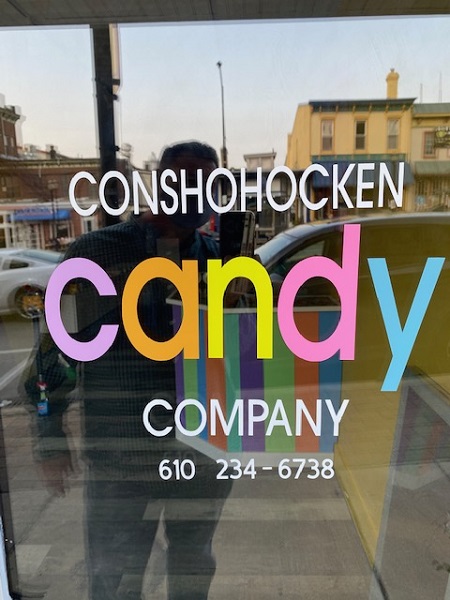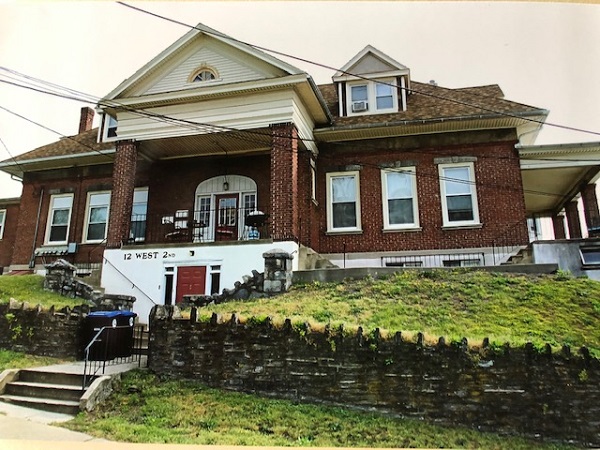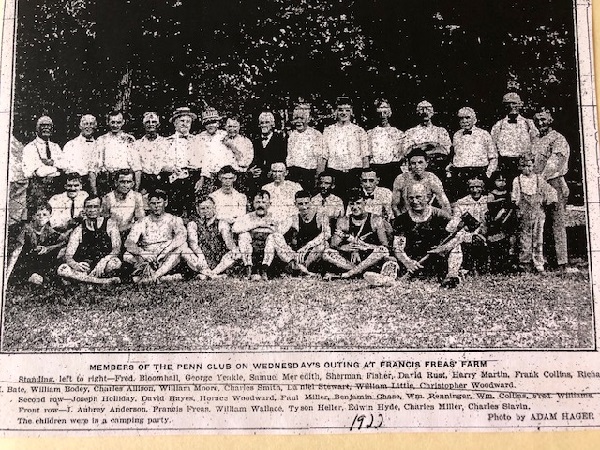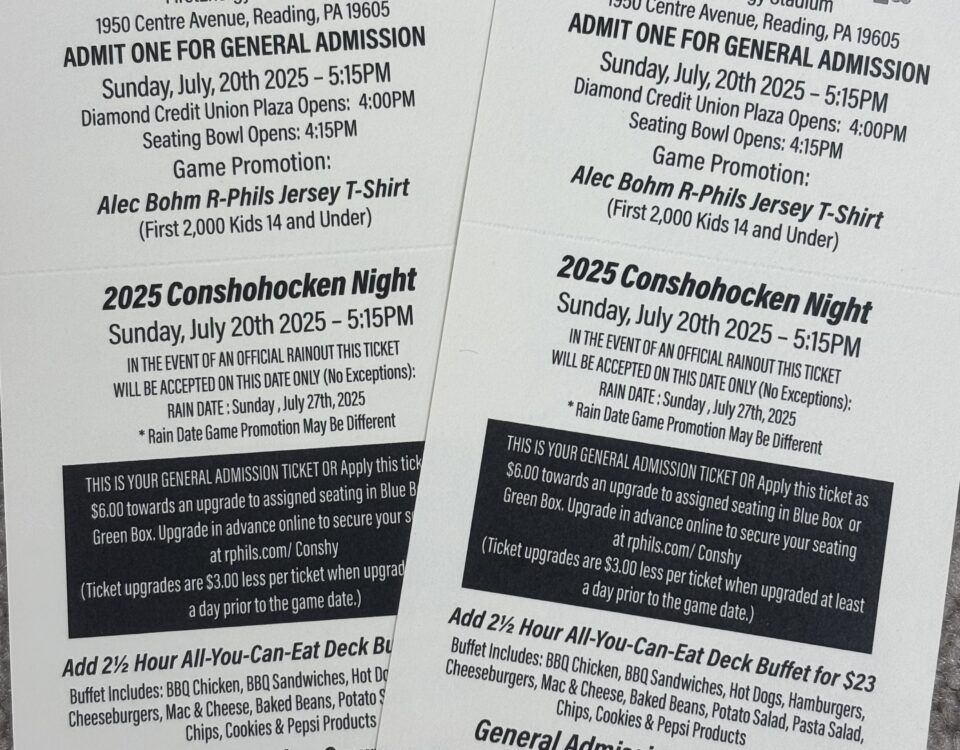
Shack in the Back – Opening Soon (ish)
October 10, 2020
Conshohocken Candy Company – Coming Soon (sneak peak)
October 13, 2020History of a House – 12 West Second Avenue (was it a house?)

History of a House
12 West Second Avenue
It’s a Cool Looking House!
Only, it wasn’t built as a house
By Jack Coll
Editor’s Note: (This is one in a series of short articles on random houses throughout the borough of Conshohocken, enjoy)
Houses up-and-down the avenues and streets of Conshohocken are, well, today, just houses, but back in the early part of last century, say a hundred years ago many of these houses provided needed services to the community. Many of them were corner stores or mid-block stores, the living rooms of some of these houses doubled as pool rooms, barber shops, cigar stores, candy stores and doctors’ offices. Sometimes the house was owned by a borough business-owner, or someone who contributed to the success of our community. I thought it might be fun and interesting to point out of few of these houses and buildings that today are occupied by residents who I’m sure had no idea that their house was at one time something more than just a house.
If you were to walk up West Second Avenue from Fayette Street, just beyond the Conshohocken War Monument and look to the right you’ll notice a beautiful two-and-a-half story building of Colonial design located at 12 West Second Avenue. The building is nearly a century old having been built in 1922 by members of the long forgotten “Penn Club.”
The Penn Club was one of many early organizations in Conshohocken made up of young men in the borough interested in moving the borough forward in a positive direction. When the Penn Club was founded in 1889 a number of such organizations already existed in the borough including the Washita Tribe No 53, who formed the “Red Men’s” Association founded in 1860, the Conshohocken Fritz Lodge No 420, Free and Accepted Masons founded in 1868, currently Conshohocken oldest organization still thriving today at their headquarters on the corner of Eighth Avenue and Fayette Street, the Patriotic Order Sons of America founded in 1870, the Conshohocken Cricket Club founded in the mid 1880’s, the Emmett Club founded in 1885, the Conshohocken Canoe club and the Pen-y-Bryn Tennis Club in 1890 among a number of other really good organizations.

The Penn Club back in 1889 was much like todays Ambucs Club. The Penn Club was made up of a lot of young businessmen and when they worked together they made great contributions to the well-being of the borough. The Ambucs started their club 90 years after the Penn Club in 1979. The Ambucs is still a thriving organization today.
A meeting was held in Stemple’s Hall on February 9, 1889 to organize a Social Club. James B. Holland was elected president and A. A. Lindsay, Secretary and Norris Messinger, Treasurer and Daniel Stewart Vice President.
The following were proposed as names of the club: Pennsylvania, Conshohocken, Harmony, Clover, Penn, Pilgrim, and Washington, votes on the choices resulted in selecting “Penn.”
A number of founding members included prominent members of the community including John Bowker, who lived at Third Avenue and Fayette Street, the current site of St. Matthew’s Church. When Bowker, a former School Board member sold his house to St. Matthew’s his house was moved to Third Avenue and Harry Street where it served as a convent until 1958 when it was demolished for the current building. Jonathan Cleaver, a brother-in-law of John Elwood Lee also served as an early member of the Conshohocken School Board who lived on the 700 block of Fayette Street, next to Lee’s Mansion where Mr. Lee lived with his wife who was Jonathan’s sister Jennie Cleaver Lee.
Other founding members of the Penn Club included William Summers Jr. who owned and operated a prominent grocery store, John Tracy who lived at Seventh Avenue and Fayette Street, (The Exxon Station location) was a Director of the Conshohocken First Nation Bank for more than three decades and was involved with a number of Railroad Companies. James B. Ray, a prominent jeweler and who was later elected twice as Burgess of the borough. Conrad Lee, brother of John Elwood who was an executive at the Lee Surgical Supply Company, and Charles Heber Clark, national known author and many more of the borough’s leading residents.
A number of the presidents who were elected in preceding years included Henry Tracy, Esq., John Pugh, a Civil War Veteran, John Bowker, former School Board member, Harry Heywood, co-owner of the Conshohocken Recorder Newspaper, John Tracy, Harry Moyer, Conrad Lee, Joseph Cavanagh, Charles Messinger, just to name a few.
By 1894 just five years after the formation of the Penn Club bigger quarters were needed to conduct their business meetings, after giving consideration to renting out the second floor of the Washington Camp Building located at West Second Avenue and Fayette Street, P.O.S. of A. building, (Tony and Joe’s Pizza) it was determined that the rent was far above what they could afford, so they sat tight for another couple of years. Members consulted with H. K. Murray and rented the second floor of his building to be used as their headquarters.
By 1901 the membership had expanded to 75 active members and for many years’ large meetings and celebration banquets were held at Little’s Operas House once located at First Avenue and Fayette Street. The Penn Club in the early part of the century had a great reputation for holding these large outing for members and their families. They would partake in activities at the Francis Freas Farm and creek, and Sanatoga Park where members of the club would play an annual baseball game between the Fats and the Leans. (The Fat-men and the Lean-men) The annual outings also provided a camping party for all the club members children where games played and food was served to the children.

In the early 1920’s members of the Penn Club purchased a plot of land on West Second Avenue that extended from Fayette Street to Forrest Street. By May of 1922 the Penn Club Building Committee awarded a contract to Charles Martinello, a Conshohocken resident for grading the three lots and excavating for the cellar of the new club house.
A contract for the erection of the building was awarded to William R. Moore, a prominent borough contractor who was also a member of the club. The building was to include a bowling alley in the basement, the first floor was fitted with club rooms and offices and the second floor was to be used for a banquet hall. There were entrances on both Fayette Street and from Second Avenue. The building was built at a total cost of $20,000.
By the spring of 1945 membership of the Penn Club had dwindled and the expense of maintaining the building had become too much for the remaining members. So in March of 1945, just 22 years after it was built, the Penn Club building located at 12 West Second Avenue went up for Sheriff’s Sale under Montgomery County Sheriff Samuel Glass, at the Montgomery County Court House in Norristown.
Bidding started at $121.43 but quickly Attorney Morris Gerber injected a bid of $1,000. Gerber stopped bidding at that point and from then on until $6,500. Was reached, the bidding was between Attorney Desmond J. McTighe and Sam Shuman. Shuman owned and operated a Sam’s Variety Store once located at 122-24 Fayette Street, who won the bid at $7,700; the property was assessed at $6,500.
Shuman stated at that time that he planned to alter the interior of the building and convert it into apartments as there was a demand for living space in the borough at that time.
Less than two months later on May 25, 1945 Shuman sold the property to Joseph Volpe of 47 Fayette Street who operated a Cigar Store at the time in the Knights of Columbus Building located diagonally across the street at Second Avenue and Fayette Street.(Current location of the Great American Pub). The new owner planned to occupy the building and later move his place of business into the building.
By the summer of 1946 the remaining members of the club held meetings in the Talone Building, 114 Fayette Street, on the second floor of what today is Flocco’s Shoe and Clothing Store. The members liquidated all remaining assets including furniture before they disbanded in the fall of 1946.
The club reformed as the Conshohocken Club formed for the promotion of sports and athletic activities, for which an application for a charter had been made.
In the late 1940’s Fayette Street store fronts were constructed onto the front of the building and currently house La Bella Mode and a Check Cashing store. The Penn Club House was eventually converted into apartments and has served as such for more than 70 years now.
And that’s the way it was when the members of the Penn Club built their club house 98 years ago.
For more articles on the History of a House series go to the Conshystuff.com web site to find more than two dozen fascinating articles about the houses and buildings around us.
Thanks for the memories.

